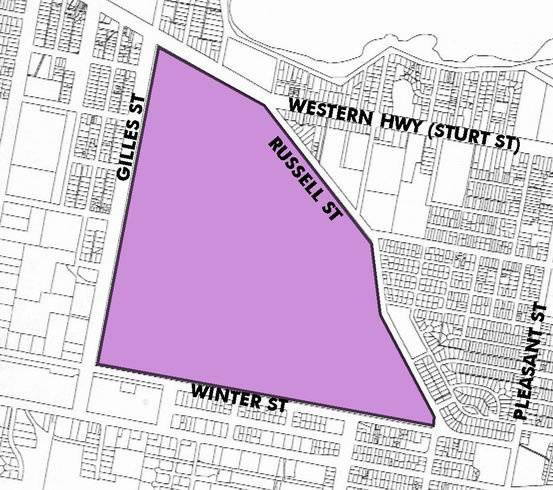| Back to search results » | Back to search page » |
|
Victoria Park Precinct
Location252 AND 302 WINTER STREET, 1A MILITARY DRIVE, RUSSELL STREET, AND STURT STREET, NEWINGTON - PROPERTY NUMBER 2035788, BALLARAT CITY LevelIncluded in Heritage Overlay |
|
Statement of Significance
What is significant?
How is it significant?
Why is it significant?
The Victoria Park Precinct is aesthetically and historically significant at a LOCAL level (AHC criteria A, D, E, F).
(a) the place's importance in the course, or pattern, of Australia's natural or cultural history;
(d) the place's importance in demonstrating the principal characteristics of (ii) a class of Australia's natural or cultural environments; D.2 Importance in demonstrating the principal characteristics of the range of human activities in the Australian environment (including way of life, custom, process, land-use, function, design or technique);
(e) the place's importance in exhibiting particular aesthetic characteristics valued by a community or cultural group;
(f) the place's importance in demonstrating a high degree of creative or technical achievement at a particular period.
The area has important heritage values for its association with gold mining in the 1860s, which has been central to the development of Ballarat. An unusual feature of the park is the large mullock heap, which marks site of the former quartz mine, and is one of the few visible signs of the former presence of extensive gold mining activities in this area of Ballarat. The place is important for its association with early military manoeuvres in the late 19th century, and the use of the site as an army base to house United States servicemen during World War 2.
Victoria Park is significant as a landmark cultural landscape in the city of Ballarat. It a fine picturesque 19th century recreational park, that covers an area of 130 hectares at the corner of Sturt and Gillies Streets in the western area of Ballarat. It has both aesthetic and historic value as a substantially intact late 19th century parkland that has retained its original design layout and plantings that were established between 1890 and 1910. The designed parkland was modeled on popular English country estates and London Parks. In the fashionable picturesque landscape style, the park is designed with typically graceful curvilinear tree-lined avenues of different European exotic trees that create formal vistas offering glimpses of distant open landscape views of open grasslands, feature trees and densely planted woodland groves.
Like the Ballarat Botanic Gardens to the north, the area is significant as a fine example of late 19th century man-made cultural landscape that visually defines the limits of 19th century urban growth of West Ballarat and remains well preserved with a high degree of integrity without later intrusive development.
The Victoria Park Precinct is socially significant at a LOCAL level (AHC Criteria G.1)
(g) the place's strong or special association with a particular community or cultural group for social, cultural or spiritual reasons.
The Victoria Park Precinct is important for its ability to demonstrate the civic pride of Ballarat citizens, whose gold riches were transformed into civic and cultural enhancement projects funded by both public and private benefactors. It is important as it illustrates the determination of the local community to transform the remnant eyesores of the mining era into fine public facilities, clearly continuing the tradition of civic beautification projects initiated by local authorities and community groups.
The parkland is significant to the local community as it has been continuously used as an open space for passive and active recreation with specific connections to equine pursuits, dog obedience, cricket, walking, jogging, cycling and motor sports since its development as a park.
The Victoria Park Precinct is scientifically significant at a LOCAL level (AHC Criteria F.1)
(f) the place's importance in demonstrating a high degree of creative or technical achievement at a particular period.
It is significant for its collection of exotic and early planted native trees including the three unusual specimens recorded on the Register of Significant Trees, as well as significant areas of native grasslands which have re-generated.
Group
Parks, Gardens and Trees
Category
Park or Garden Precinct




